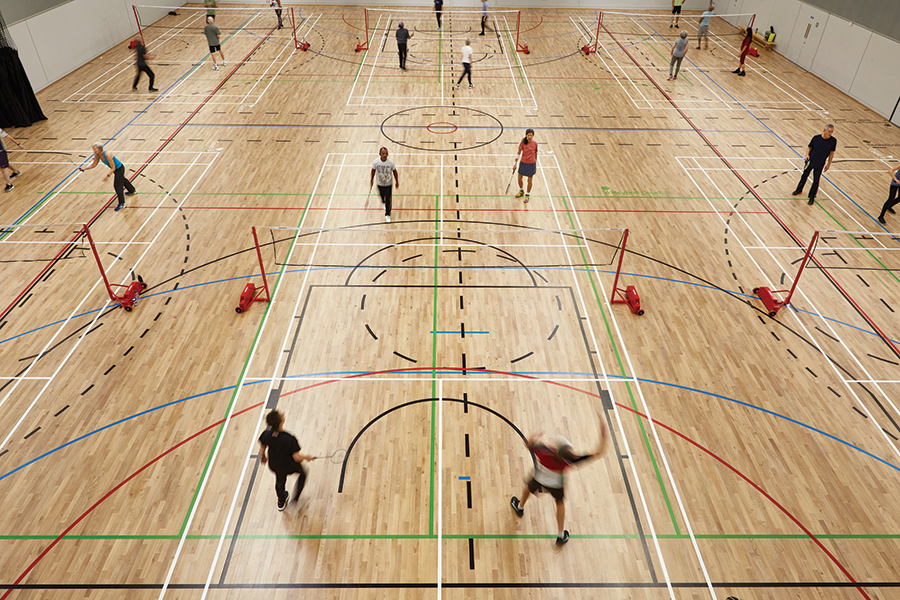WHEN it comes to choosing flooring, comparing products by cost is second nature, but in the past few years, an emphasis on a building’s environmental impact has become paramount, not least in terms of securing funding from the department for education. As well as choosing the right floor to start with, the environmental impact of maintaining and repairing the floor during its lifespan, and its eventual disposal or recycling is an increasingly important consideration.
There can be no doubt an effective maintenance programme will extend the life of a floor. It will also reduce waste and landfill, reduce consumption of raw materials, the need for recycling, carbon offsetting and pollution. Less frequent replacement also means operational carbon levels will be reduced in the long term because the use of vehicles and energy needed for manufacturing will be reduced.
How many times can the floor be refurbished? A solid wood floor from Junckers can reportedly be sanded and sealed up to 10 times and with 12-year intervals between sandings, a typical lifespan of 60 years will comfortably be exceeded, a claim probably no other type of sports floor can match. Compared with a typical 15-year lifespan of a synthetic or ‘engineered’ floor there really is no comparison in terms of lifecycle cost.
Is it easy to repair if the floor gets worn or damaged? Floors made from large elements, typically plywood or chipboard sheets on to which vinyl, polyurethane or linoleum is laid, can be difficult to repair because of the large sheet size, and repairs will often result in large amounts of waste. The sheets will be glued together and often glued down as well.
Floors made from smaller elements that aren’t fixed together, such as solid hardwood boards are easier to repair on a localised basis with far less waste.
Can the floor be recycled? With the concept of the circular economy becoming more and more important, keeping raw materials in use for as long as possible reduces the impact on the environment.
Says Junckers: ‘A Junckers solid wood floor can often be repurposed – decades-old floors lifted from sports halls reused in commercial and even residential settings – a sand and seal make them good as new. At the end of its long life, a Junckers floor will degrade naturally, unlike flooring surfaces made from crude oil derived materials.’
Every client values a trusted maintenance contractor. Regular professional maintenance will keep the floor in optimum condition and extend its lifespan. Offering a free health check for floors is a good way to connect with both old and new customers.
By assessing the condition and performance level of the floor through inspection, a contractor can recommend a regular maintenance regime. This extends the relationship with the customer and demonstrates their floor was a sound investment that’ll serve them well for a long time.
Continues Junckers: ‘For sports floors, Junckers HP Sport is a trusted product designed specifically for sports floors with decades of performance history under its belt and known as one of the most durable lacquers on the market today.
‘It’s a two-part water-based lacquer that has a tough and flexible non-cracking finish, superior to hard, brittle UV products. By using Junckers woodcare products as part of a maintenance programme, clients can take advantage of Junckers’ 25-year warranty, a successful scheme run through Junckers’ approved maintenance contractors. HP Sport and HP Commercial floor lacquer are part of Junckers’ integrated range of primers, lacquers, cleaning products and line marking paint, offering a complete solution to wood floor maintenance.’
01376 534700
www.junckers.co.uk
Please click to view more articles about
> Junckers <

